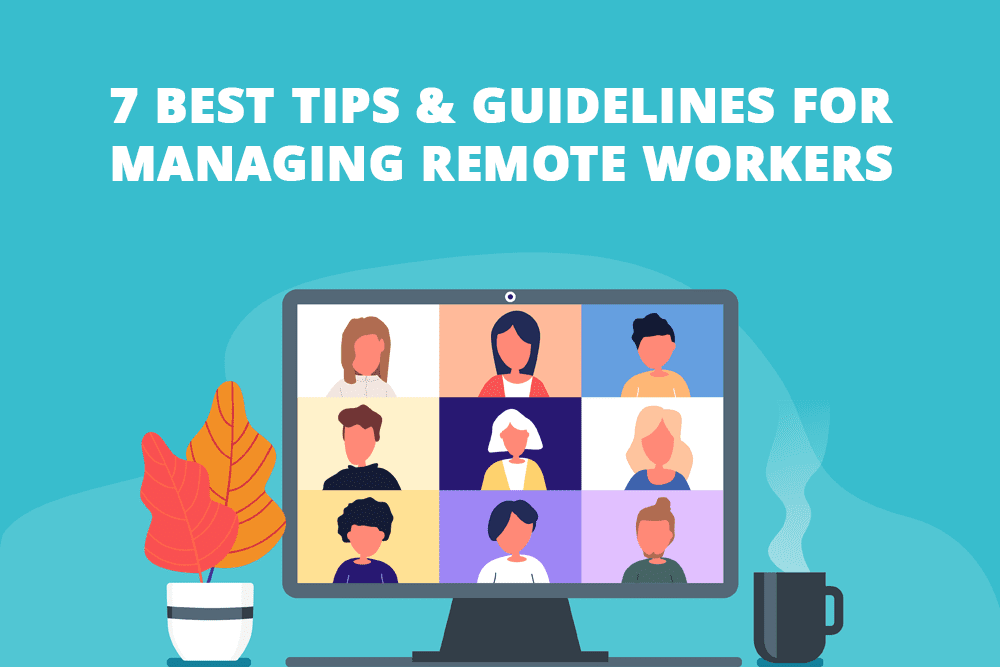The workforce is shifting to a remote-first mindset. In fact, by 2025, the number of remote workers is expected to double. And with this new way of working also comes a new way of managing.
Unlike working from an office, remote work means less face-to-face interaction. You can’t turn to your employee at their desk and ask them a quick question. Instead, this quick question will need to be a message or call. This lack of personal connection can lead to employees feeling isolated or lonely. Add to that the distractions that come with working at home, and soon you’ll realize that managing remote workers is much different than a traditional work environment.
Luckily, as a largely remote company, we’ve picked up a few tips and guidelines for successfully managing remote workers:
1. Check-in Daily
Although this might seem like a bit much, this will be critical to the success of your team. Set a meeting every day for a quick 10-to-15-minute check-in with your team. There are even apps, like Standuply, that can help with this by automating your meetings. Ask your team to go over their tasks for the day and see if they have any roadblocks that they need help with. This will keep you informed of what your employees are working on and allow them a chance to ask questions or request assistance. Remember, these meetings should be quick! You don’t want to become a bottleneck in their workday by consuming their mornings with meetings. Quickly touch base with your team and then give them the freedom to do their work.
2. Provide the Right Collaboration Tools
Take advantage of collaboration tools to streamline your workflow and provide employees with ways to successfully collaborate with one another. Since each team member will be in a different location and possibly time zone, it will be incredibly important to find the right tool/tools. Plus, the right tools will help your team feel more connected and less isolated. Try to find an all-in-one solution, if possible, to cut back on the number of apps or tools your employees will need to use. For example, Broadvoice’s all-in-one Communicator app lets you chat, text, call, and video conference all on the same platform.
3. Focus on Results, Not Hours
One of the greatest perks of remote work is getting to work in whatever way best suits you. Define clear goals and expectations for employees, but try not to micromanage. Empower your employees by giving them the freedom to develop a plan and schedule that allows them to achieve their desired results. As long as an employee is consistently performing and delivering superior work, their “schedule” shouldn’t matter so much.
4. Equip Employees for Success
No good commander would send their troops into battle without the right equipment; the same is true for your employees. Make sure your team members are equipped with all the tools they will need to successfully do their job—laptop, keyboard, headset, ergonomic chair, desk, etc. Set aside a budget specifically for employee work-from-home set-ups so you can provide your employees with the necessary resources right from the start.
5. Overcommunicate
Communication is paramount to managing a remote team. Since team members are dispersed, it will be easier for them to miss important information or updates. Always err on the side of overcommunicating. There’s no harm in updating a document in the cloud and then pinging your team member in a chat to let them know that it’s been updated. With the influx of notifications, they could easily be overwhelmed. The more you communicate personally with your team, the more in sync you will all be.
6. Make Yourself Available to Team Members
In an office environment when an employee has a question, they can quickly knock on your door and ask. When working remotely, there is no door. Instead, it’s all done online. Even if you mark off time on your calendar to work or to take meetings, make sure you’re still available to your employees. If they have a question or need help with something, they need to have a reliable means of reaching you. Create an open-door policy so employees know they can always reach out to, whether it’s for work help or just to provide a listening ear.
7. Celebrate Successes
Just because you’re not in an office doesn’t mean you shouldn’t acknowledge important achievements, milestones, birthdays, or other events. Consider creating a separate channel in your chat for employee shoutouts or to discuss non-work-related things. Try creating a channel to showcase employees’ furry friends. Not only will this be fun for your employees, but it will also help build connections so they feel less isolated and lonely. The more social virtual interaction you can create, the more your employees will feel they are not alone and instead a part of something bigger.
Managing a remote team has its own unique challenges, but if you implement the above steps, your team will thank you on their way to success.








